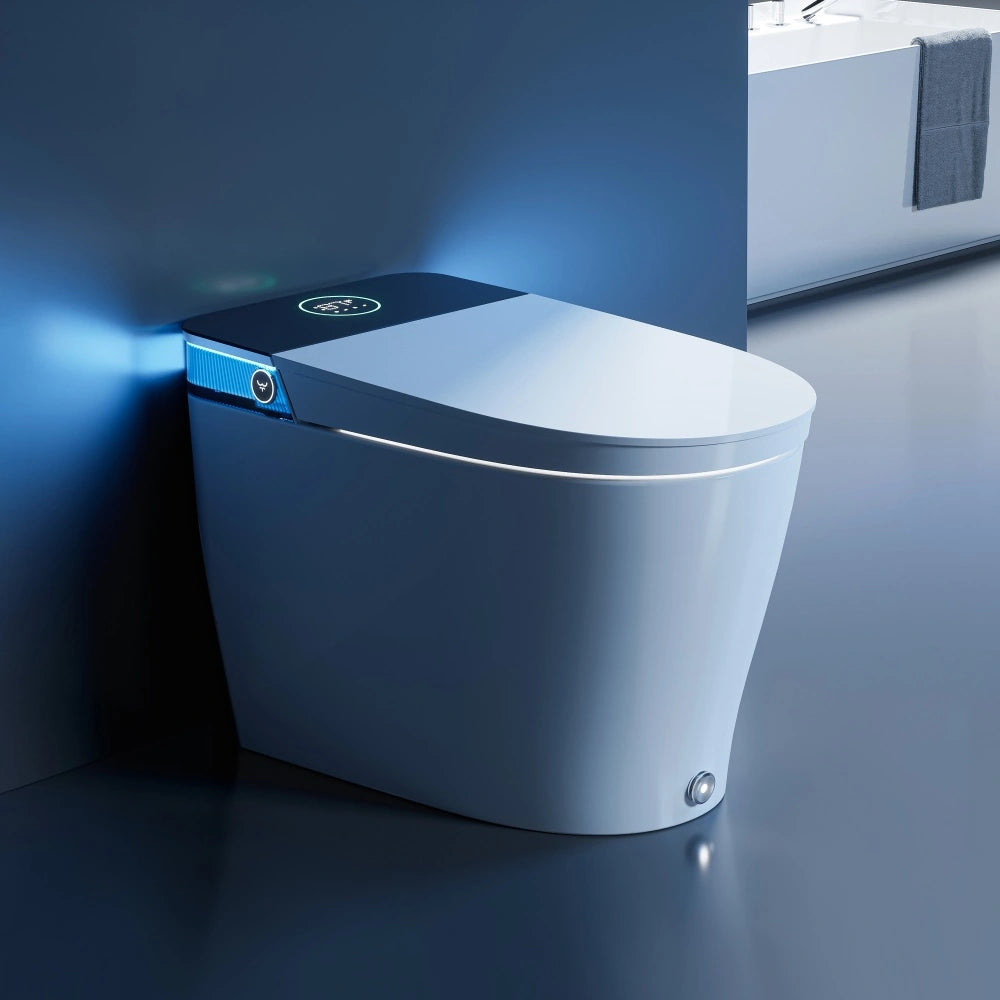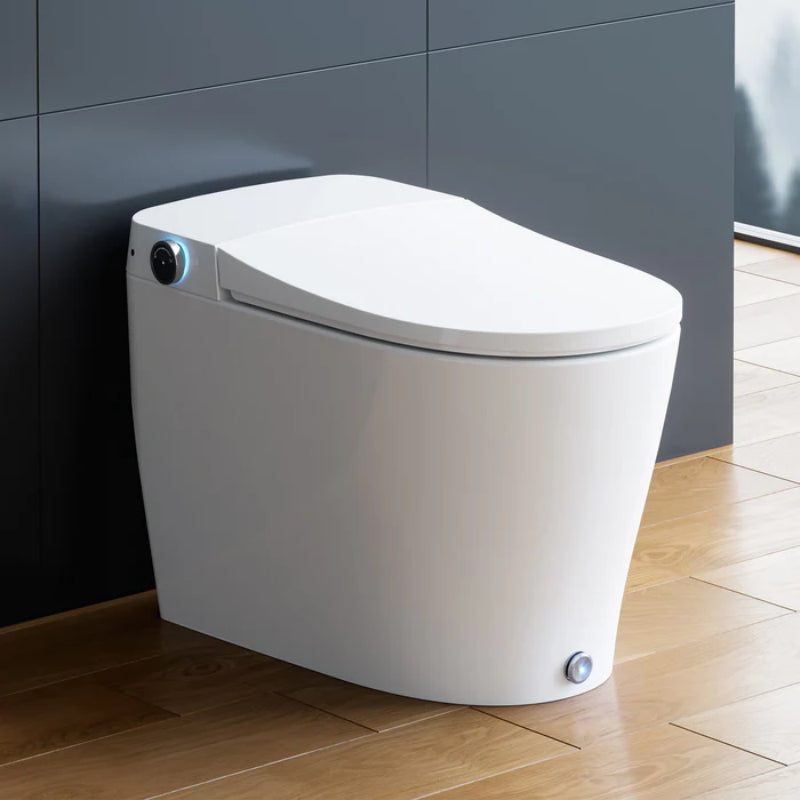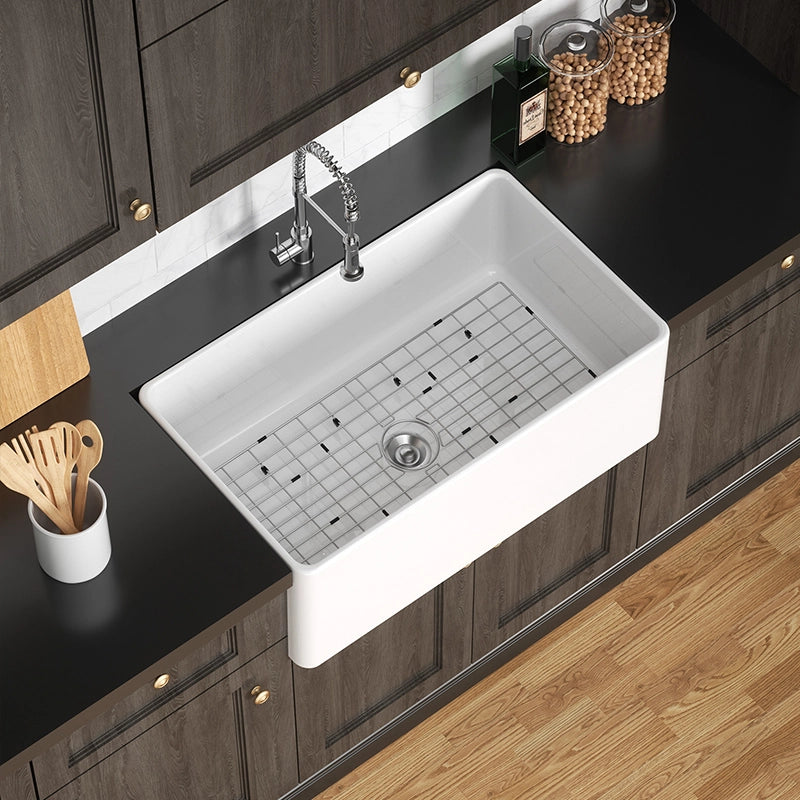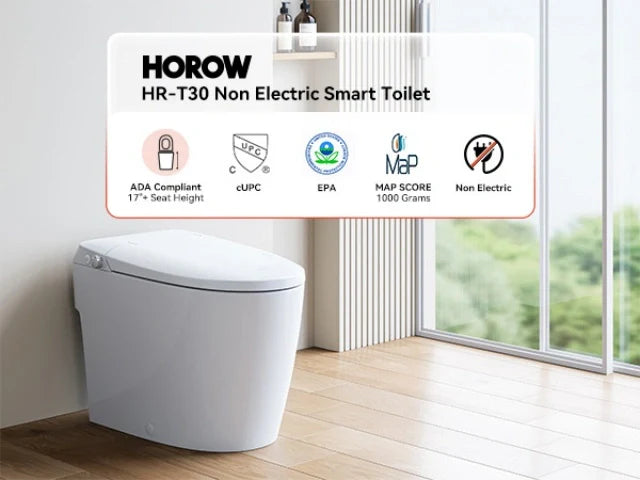Have you ever noticed something unusual in the toilet and wondered what it might mean for your health? Discovering gallstones in your home after they've journeyed through your body can be quite a surprise. They come in all sorts of sizes and shapes. Some are bitty and hard to notice while others can be big as a golf ball. The colors and shapes of these stones give us clues bout how they form. Cholesterol stones look sorta yellowish green while bilirubin stones are darker in color. This helps us figure out where they come from. If you're interested in what do gallstones look like in the toilet, there might be some clues from the size and color of gallstones to consider.
The presence of gallstones can cause feelings of discomfort and unease in the body after consuming a meal. Illness or discomfort may arise after eating when gallstones present. Gallstones may pass out of the body unnoticed and only become visible in the toilet. By examining what do gallstones look like in the toilet after using the toilet bowl provides insights into your health condition. Those curious about the appearance of gallstones in the toilet can identify formations by observing their stool. It's important to pay attention to the appearance of gallstones in your stool and keep an eye out for any indications of gallbladder problems so you can address these issues on and prevent them from escalating into severe complications.
Upon reflecting on this scenario you may find yourself contemplating your health and daily habits with an inclination to make changes in order to lower the chances of developing gallstones.

Unlocking the Mystery of Gallstones
Knowing about gallstones is crucial for detecting health issues. Gallstones are masses formed from bile components such as cholesterol and bilirubin. The different hues present in these stones could indicate underlying liver issues or blood disorders while lighter green shades might suggest the presence of cholesterol stones linked to levels of cholesterol, in the bile. Finding them in the stool could serve as an indication of their presence. If you're curious about what do gallstones look like in the toilet, through intervention examining their features like their size shape and texture can give you a better understanding of their appearance.
Identifying the symptoms of gallstones requires grasping their effects on the body and how the body reacts to them. Symptoms, like nausea and vomiting can sometimes be mistaken for problems. The serious outcomes of gallstones that may lead to the need, for gallbladder removal emphasize the importance of diagnosis.

What do Gallstones look like in the Toilet
Studying the gallstones found in the toilet can offer information, about your health by examining their sizes, shapes and colors for any issues.
Size
Gallstones come in sizes ranging from tiny to large sizes . Some are as small as a grain of sand while others can grow to the size of a golf ball. The size of a gallstone plays a role in how its spotted while passing through stools. Smaller stones may go undetected or pass unnoticed without any symptoms. However, larger ones could cause discomfort as they travel through bile ducts or get excreted in the stool. If you wonder what do gallstones look like in the toilet, their varying sizes can serve as an indicator.
Shape
Gallstones are commonly oval shaped and can appear jagged or uneven based on their formation in the bodys system. Cholesterol stones have a circular look compared to pigment stones that might show an irregular texture. As gallstones pass through the body and are released through stool, they may look like small clusters of pebbles or tiny crystal fragments. These unique shapes help distinguish gallstones from other substances that might be present in stool, like undigested food or mucus. For those seeking clarity on the matter it can be quite informative to know what do gallstones look like in the toilet.
Color
Gallstones can vary in color from green to darker shades of brown or black based mainly upon the specific type of stone they consist of. Cholesterol stones often appear yellow green since they are the common type of gallstone. Conversely pigment stones form due to an abundance of bilirubin and display darker hues like brown, dark green or even black in color. The color of a gallstone can provide clues about its composition. Suggest whether it may be associated with an underlying condition such as liver issues or a blood disorder. If one is curious about what do gallstones look like in the toilet, color becomes an aspect to consider.
If you ever wonder what do gallstones look like in the toilet, observing these features can help you differentiate them from materials in stool and provide insights, into the condition of your gallbladder.
Gallstone Lookalikes: What They Are Not
Sometimes, what people think are gallstones in the toilet may actually be something else. Several common things found in stool can look similar to gallstones, but they differ in texture, origin, and behavior in water. Recognizing these differences can help prevent confusion.
For example, undigested corn kernels are yellow and round, but they are lightweight, float in water, and retain their distinct kernel shape. Peanuts or bits of other nuts might resemble pale stones but are usually soft and can be crushed easily. Medication residue may appear as white or chalky fragments that dissolve in water, and fiber clumps can be brown or green but are typically soft and fibrous, not hard. Fat globules, found in greasy or oily stools (steatorrhea), may look like pale yellow blobs but smear easily and lack the firmness of real stones.
Gallstones, by contrast, are solid, may be crystalline or smooth, and do not break apart easily in water. If you're unsure, placing the item in a clean container for closer inspection or medical review is a reasonable next step.
| Item | Appearance | How It Differs from Gallstones |
|---|---|---|
| Undigested Corn Kernels | Yellow, round, and firm | Retains kernel shape, lightweight, often floats |
| Peanuts or Nut Fragments | Oval, tan, or brownish | Usually softer, easily crushable, lacks crystalline texture |
| Medication Residue | White, chalky fragments | May dissolve in water, doesn't feel like stone |
| Fiber Clumps | Brown or green, fibrous | Soft texture, easily torn |
| Fat Globules (Steatorrhea) | Pale yellow, oily or greasy | Smears easily, has an unpleasant odor, not solid |
Unraveling the Causes of Gallstones
It's important to know the reasons behind gallstones so we can catch them early and avoid issues down the line. They develop when there is a lack of balance in the components of bile produced by the liver and stored in the gallbladder. Several factors play a role in causing gallstones to form.
High Cholesterol in Bile
Cholesterol stones are commonly encountered as a type of gallstones that form when there is an excess of cholesterol in the bile fluid in the bodys system. In circumstances within the bile fluid are substances that assist in breaking down cholesterol however when there is an excess amount of cholesterol available it can solidify and transform into stones. This phenomenon tends to occur among individuals with elevated cholesterol levels or those who are overweight and maintain a diet high in fats. If you've ever checked your stool and wondered about what do gallstones look like in the toilet, cholesterol stones may resemble pieces.
Excess Bilirubin
Sometimes when the liver processes blood cells and generates an excess of bilirubin, it can result in the development of pigment stones of a shade that are often seen in people with liver issues or certain blood disorders like sickle cell anemia. The distinct appearance of these stones might make people curious about what do gallstones look like in the toilet especially if they notice pieces.
Impaired Gallbladder Function
When the gallbladder is not working properly and cannot release bile effectively into the system, it may result in the formation of gallstones due to the increased concentration of bile. This can happen to individuals experiencing gallbladder problems or those who have undergone gallbladder surgery.
Obesity and Weight Changes
Obesity poses a risk of developing gallstones by disrupting the composition of bile substances in the bodys system. Moreover, sudden weight loss from diets or weight loss procedures can prompt the liver to release surplus cholesterol into the bile heightening the likelihood of gallstone formation.
|
Condition |
Gallstone Risk Factor |
Potential Impact |
|
High bile cholesterol |
Formation of cholesterol stones |
Increase in stone formation probability |
|
Excess bilirubin |
Formation of pigment stones |
Risk associated with liver disease or blood disorders |
|
Impaired gallbladder function |
Inefficient bile emptying |
Higher concentration of bile, increased stone formation |
|
Obesity and dramatic weight changes |
Metabolic imbalances affecting bile composition |
Enhanced likelihood of developing cholesterol stones |
It is essential to examine the presence of gallstones in stool to grasp the reasons for their formation and act promptly when symptoms appear. Refinement of your observation of feces can contribute to avoiding health issues and enhancing your general health.
The Pain Experienced by People with Gallstones
The pain caused by gallstones can vary depending on factors, like the size and location of the stones and whether they are blocking anything in your bodys system. While some people may not exhibit any symptoms of gallstones all others might experience intense pain. In some cases, the pain can be so severe that immediate medical attention is required. For those with symptoms, they may question what do gallstones look like in the toilet without notice.

Biliary Colic (Gallstone Attack)
Gallstone attacks or biliary colic are commonly experienced by people with gallstones. It is characterized by sharp pain in the upper right abdomen, triggered especially after eating fatty foods. This type of discomfort tends to be intermittent and lasts for a few minutes up to several hours. It may also extend to the back or shoulder area and be quite intense. However, the pain typically diminishes once the gallstone shifts and the bile duct is no longer obstructed. In some cases, individuals might even discover small gallstones in their stool, prompting them to wonder what do gallstones look like in the toilet.
Pain from Gallstones Moving
When small stones travel through the bile ducts that transport bile, from the liver and gallbladder to the intestines for digestion and waste removal purposes. A person may experience some discomfort in their bodies plumbing system when a gallstone gets stuck and blocks bile flow. This discomfort may occur intermittently as the stone moves through the system. During these times, people might observe gallstones in their stool and begin to question what do gallstones look like in the toilet.
Acute Cholecystitis (Inflammation of the Gallbladder)
When a gallstone becomes trapped in the gallbladder for a period of time, it can result in cholecystitis - a condition marked by gallbladder inflammation that can cause discomfort along with symptoms like fever, nausea, and vomiting. This condition is considered serious and requires attention to prevent complications such as infections or gallbladder ruptures. Patients may also notice gallstones in their stool during this stage and wonder what do gallstones look like in the toilet as they monitor their symptoms.
Pain in Complicated Gallstone Disease
The discomfort can become quite severe and linger for a while at times. People experiencing a form of gallstone issue may notice gallstones in their stool and experience discomfort that could lead to increased trips to the restroom during flare ups. During these instances, people often question what do gallstones look like in the toilet. Recognizing these indicators is crucial, for symptom management and seeking appropriate medical care.
What To Do If You Discover Gallstones
Finding something in the toilet that resembles gallstones can be unsettling. The first step is to stay calm and observe closely. If you notice unusual stone-like particles in your stool—especially if you’ve also been experiencing digestive discomfort—it’s a good idea to document what you see. Take a photo or collect the sample if possible, and note any accompanying symptoms like pain after eating, nausea, or bloating.
While gallstones may pass naturally, their presence can also signal deeper issues with your gallbladder or bile ducts. Ignoring the signs could lead to complications such as blockages or infections. If this is your first time seeing what you believe to be gallstones in the toilet, it’s wise to consult a medical professional.
When to See a Doctor
You should contact your doctor if:
- You’ve seen pebble-like objects in your stool more than once
- You experience recurring upper abdominal pain, especially after fatty meals
- You feel bloated, nauseous, or develop a fever
- Your urine is dark and stools appear pale
- There’s persistent pain radiating to your back or shoulder blade area
Even if you aren’t currently in pain, passing gallstones can be a sign that your body is struggling to maintain proper bile flow, and your gallbladder may need evaluation.
How Diagnosis Is Confirmed
Doctors don’t usually rely solely on stool examination to confirm gallstones. Instead, they use a combination of imaging tests and clinical assessments to make a clear diagnosis. These may include:
- Abdominal ultrasound: The most common and non-invasive way to detect gallstones in the gallbladder
- CT scan or MRI: Helps detect gallstones in the bile ducts or confirm complications
- HIDA scan (cholescintigraphy): Evaluates how well your gallbladder functions
- Blood tests: Check for signs of infection, inflammation, or bile duct blockage
If a diagnosis is confirmed, your doctor will discuss treatment options, which may include dietary changes, medication to dissolve stones, or surgery if necessary. In many cases, people live normally after gallstones are removed or managed with lifestyle changes.
Diet Tips to Prevent Gallstone Recurrence
Diet plays a significant role in preventing gallstones from forming again. After passing gallstones or being diagnosed with them, making dietary adjustments can lower the risk of recurrence.
It’s helpful to increase your intake of fiber-rich foods such as fruits, vegetables, and whole grains. Eating healthy fats like those found in olive oil or avocado can support proper bile function. Staying hydrated by drinking plenty of water daily is also beneficial.
Avoid high-fat and fried foods, processed snacks, and refined sugars. Try to maintain a consistent weight without sudden drops, as rapid weight loss can trigger gallstone formation. Eating smaller, more frequent meals instead of large heavy ones helps maintain bile flow and reduces the chance of bile becoming stagnant in the gallbladder.
Soothing Relief: Can Bidet Toilets Ease Gallstone Discomfort
People who have discovered gallstones in the toilet often face lingering discomfort—not only from the physical symptoms but also from the confusion and concern that come afterward. While bidet toilets cannot treat gallstones or address the internal pain they may cause, they can significantly improve comfort during one of the most sensitive parts of the recovery process: using the bathroom.
Gallstones can irritate the digestive tract and make bowel movements more uncomfortable, especially if there’s straining or pressure in the lower abdomen. For those dealing with tenderness or inflammation, using dry toilet paper may feel harsh and even aggravate the area. This is where HOROW bidet toilets offer a gentler, more hygienic alternative.
Bidet seats with adjustable water pressure and temperature settings allow users to tailor the experience to their sensitivity level. A warm, gentle stream of water provides a soothing cleansing effect that can reduce irritation and promote a sense of relief after each use. Cleanliness is critical during this time, and bidets ensure thorough hygiene without the friction of wiping, which can be especially beneficial when the body is already under stress.
In addition, HOROW bidet toilets often feature ergonomic designs, heated seats, and hands-free operation—adding extra comfort and convenience during recovery. These features make them an excellent choice not only for individuals managing gallstone symptoms but also for anyone seeking a more comfortable and supportive bathroom experience.

FAQ
1. What do gallstones look like in the toilet?
Gallstones found in the toilet may vary in appearance. They could appear grain like or large and pebble shape with colors ranging from green, to brown or black. At a glance they could resemble regular stool unless examined closely.
2. How can I identify gallstones in stool?
Look for particles or stones in stool samples to detect gallstones as they usually have an crystalline appearance in shades of brown or black making them different from stool.
3. What causes gallstones?
The development of gallstones may occur due to cholesterol levels in the bile or an excess of bilirubin in the body system with other factors such as a malfunction in the gallbladder and changes in weight playing a role in this condition as well.
4. What does gallstone pain feel like?
Experiencing discomfort from gallstones can vary from mild to intense with symptoms commonly manifest as a lingering soreness in the stomach region that might extend to the back or shoulder area particularly when a gallstone triggers inflammation or shifts, within the bile duct network.
5. Can bidet toilets provide relief for those passing gallstones?
Bidets may not directly alleviate the discomfort caused by gallstones. They can provide a comfortable experience overall by offering a gentle stream of water that is less harsh on the skin compared to using toilet paper, which can be beneficial for people experiencing sensitivity after passing gallstones.








Leave a comment
This site is protected by hCaptcha and the hCaptcha Privacy Policy and Terms of Service apply.